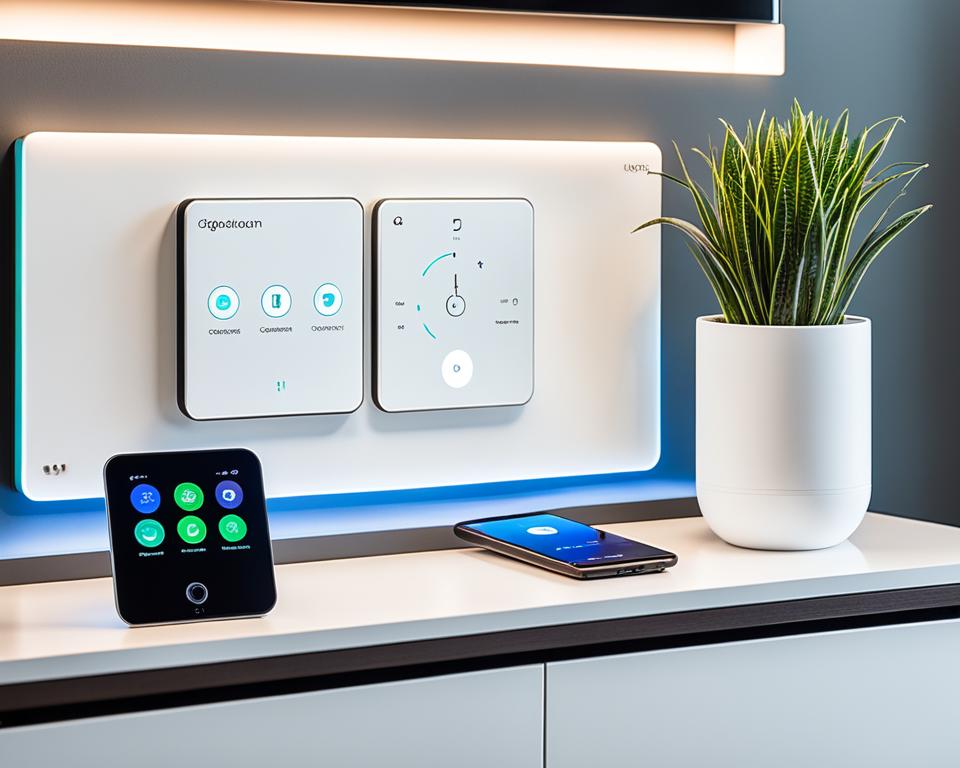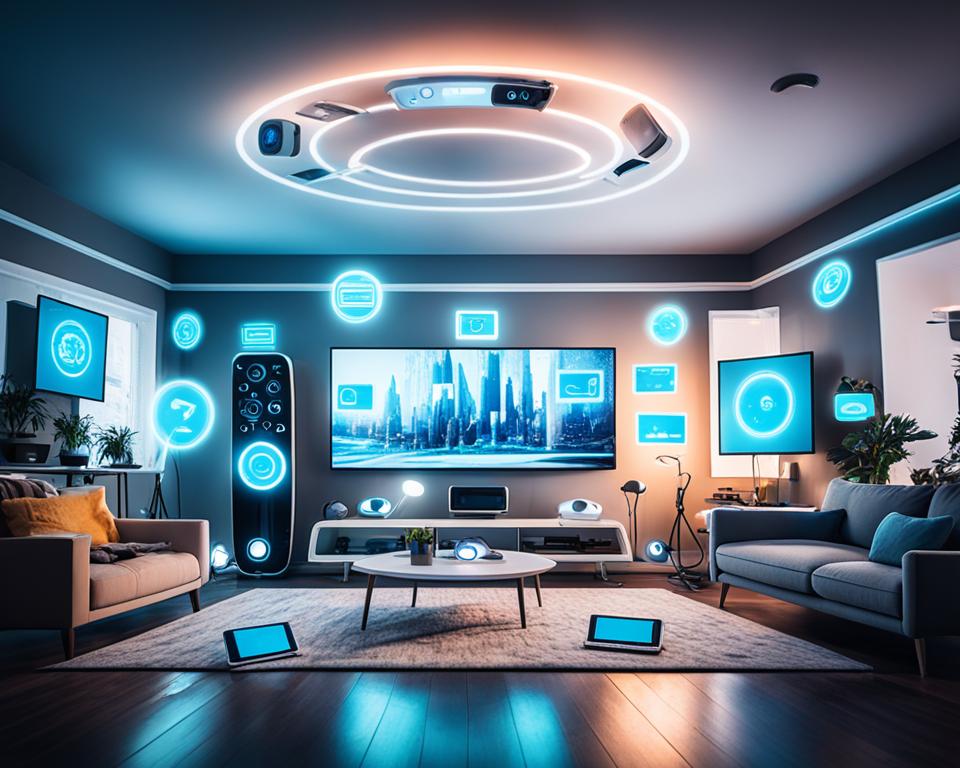
ChatGPT for Beginners Made Easy: Learn the Basics, Master Prompts, Boost Productivity, and Cash In With Conversational
$13,99 
Welcome to the future of smart home control! With the integration of ChatGPT, an advanced AI-powered language model, you can take your smart home experience to a whole new level. Say goodbye to clunky interfaces and hello to natural and intuitive interactions with your smart devices.
Imagine controlling your lights, thermostats, shades, and more, just by using your voice. That’s the power of ChatGPT. By integrating this cutting-edge technology with voice assistants and home automation systems, you can effortlessly interact with your smart home devices and create a personalized environment tailored to your needs.
ChatGPT enhances the accuracy and responsiveness of voice commands, making it easier than ever to control your smart home. Whether you want to dim the lights, set the perfect temperature, or open/close your shades, ChatGPT understands and executes your commands with precision.
Designed to simplify your life, ChatGPT creates a seamless and connected smart home experience. No more fumbling with multiple apps or devices; with ChatGPT, all you need is your voice. It’s like having your very own personal assistant, ready to cater to your every smart home need.
Get ready to unlock the true potential of your smart home with ChatGPT. Say goodbye to complicated controls and say hello to a more natural and effortless way of managing your smart devices. Get started and experience the future of smart home control today!
The Potential of AI Language Models in Smart Home Control
AI language models, like ChatGPT, have the potential to revolutionize smart home control by enabling voice assistants to understand and respond to natural language commands more accurately. These advanced language models utilize deep learning algorithms to parse complex sentences, interpret ambiguous requests, and distinguish between smart home commands and requests for information.
By leveraging AI language models, smart home control systems can provide a more intuitive and personalized experience for users. These models can understand context and user preferences, making it easier to control lights, thermostats, shades, and other connected devices without the need for specific commands or rigid syntax.
With the ability to comprehend natural language, AI language models enhance the human-like interaction with smart home devices. For example, instead of saying, “Turn off the lights in the living room,” users can simply say, “Please dim the lights in the living room to 50%.” This level of flexibility offers convenience and a more fluid user experience.
Advantages of AI Language Models in Smart Home Control:
- Accurate interpretation of complex commands
- Improved responsiveness and reliability
- Enhanced context awareness
- Ability to handle natural language requests
- Personalized and adaptive control
Integrating AI language models into smart home control systems opens up a world of possibilities for users. They can now control their environment with ease and efficiency, truly transforming their houses into smart homes.
| Benefits of AI Language Models in Smart Home Control | Key Features |
|---|---|
| Enhanced user experience | Accurate interpretation of complex commands |
| Greater flexibility and adaptability | Improved responsiveness and reliability |
| Intuitive control with natural language | Enhanced context awareness |
| Efficient smart home automation | Ability to handle natural language requests |
| Personalized customization | Adaptive control based on user preferences |
Josh.ai’s Integration of ChatGPT for Smart Home Control
Josh.ai, a leading home automation system, is at the forefront of integrating ChatGPT into its voice assistant for enhanced smart home control. Through a proof-of-concept video, Josh.ai showcased the immense potential of ChatGPT in controlling shades, lights, and providing weather information.
By seamlessly integrating AI language models like ChatGPT, Josh.ai aims to revolutionize the way users interact with their smart devices within a connected home environment. This integration holds the promise of creating a more natural and intuitive experience, empowering users to effortlessly control their gadgets.
A true game-changer, the integration of ChatGPT within Josh.ai’s voice assistant has the potential to provide unmatched smart home control, offering users a range of exciting possibilities. From commanding lights to adjusting shades, ChatGPT enables users to orchestrate their smart devices effortlessly and enjoy a more personalized living space.
With ChatGPT’s ability to parse complex sentences and interpret natural language commands, users can expect unprecedented ease and accuracy in controlling their smart home environment. Say goodbye to complicated button combinations or tedious manual adjustments – ChatGPT brings simplicity and convenience to every smart home.
By leveraging the power of ChatGPT, Josh.ai elevates the smart home experience, creating a seamless integration of voice control and automation. This collaboration between AI language models and home automation systems paves the way for a new era in smart home technology, where intuitive control meets unparalleled convenience.

Benefits of Josh.ai’s Integration of ChatGPT for Smart Home Control
- Enhanced voice control: ChatGPT’s integration with Josh.ai’s voice assistant brings a new level of accuracy and responsiveness to voice commands, improving the overall smart home control experience.
- Seamless interaction: By leveraging AI language models, Josh.ai enables a more natural and intuitive way of interacting with smart devices, eliminating the need for complex menus or specific commands.
- Personalized smart home experience: With ChatGPT, users can create a personalized smart home environment, customizing their preferences and automations to suit their specific needs and lifestyle.
- Simplified control: ChatGPT simplifies the control of connected gadgets, allowing users to effortlessly manage lights, shades, and other devices using natural language commands.
- Future-proof technology: With the integration of ChatGPT, Josh.ai demonstrates its commitment to leveraging cutting-edge AI advancements to enhance the smart home control experience, continually adapting to meet evolving needs.
Josh.ai’s integration of ChatGPT sets the stage for a future where smart homes are controlled effortlessly and intuitively. With the power of AI language models at their fingertips, users can unlock a new level of control and convenience, transforming their living spaces into truly intelligent homes.
Using ChatGPT for Smart Home Automation with Raspberry Pi
Smart home automation has become increasingly popular, and with the integration of ChatGPT and Raspberry Pi, controlling your smart devices has never been easier. By creating a plugin that connects ChatGPT to a Raspberry Pi, users can harness the power of AI language models to control their smart home devices using voice commands.
Imagine being able to effortlessly toggle lights on and off or create simple home automation scenarios, all with the help of ChatGPT. With this integration, you can enjoy a hands-free and convenient way of managing your smart home environment.
By utilizing ChatGPT’s natural language processing capabilities, Raspberry Pi enables seamless communication between users and their smart devices. Whether it’s turning on the lights before entering a dark room or adjusting the temperature without lifting a finger, ChatGPT and Raspberry Pi make it possible to control your smart home effortlessly.
Integrating ChatGPT with Raspberry Pi also showcases the versatility of both technologies. Whether you’re a tech enthusiast or a beginner, this combination allows you to explore the possibilities of smart home automation in an accessible and user-friendly manner.
With ChatGPT and Raspberry Pi, the potential for smart home automation is virtually limitless. This integration empowers users to create a personalized and tailored smart home experience that seamlessly integrates with their lifestyle and preferences.
Take your smart home to the next level by leveraging ChatGPT and Raspberry Pi for effortless and intuitive control of your connected devices.
Leveraging ChatGPT for Smart Home Integration
ChatGPT’s versatility extends beyond voice assistants and home automation systems. It can also be leveraged to create seamless smart home integrations, allowing users to interact with their devices using natural language commands. By generating code for different smart home systems like Home Assistant, Google Nest, Amazon Alexa, and Cortana, ChatGPT simplifies the integration process.
With ChatGPT, users can follow provided code templates and instructions to integrate their preferred smart home assistant. The core API code, generated by ChatGPT, serves as the foundation for controlling devices with voice commands, making it easier than ever to manage a smart home environment.
Personalization and Customization
ChatGPT provides guidance for personalization, allowing users to tailor their smart home integration according to their preferences. While some programming knowledge may be required for customization, ChatGPT offers support throughout the process, ensuring a smooth and efficient integration.
Whether it’s adjusting lighting settings, controlling thermostats, or managing smart appliances, ChatGPT enables intuitive and personalized control. By leveraging its capabilities, users can create a smart home ecosystem that seamlessly adapts to their needs and lifestyle.
The Power of Natural Language Control
The integration of ChatGPT’s natural language understanding with smart home assistants revolutionizes the way we interact with our devices. Instead of relying on predefined commands, users can communicate with their smart home systems in a more conversational manner.
For example, you could say, “ChatGPT, dim the lights in the living room” or “ChatGPT, set the thermostat to 72 degrees.” By integrating ChatGPT, smart home control becomes effortless and intuitive, enhancing the overall user experience.
Exploring Possibilities with ChatGPT
ChatGPT’s integration in smart homes opens up a world of possibilities. Users can unlock the full potential of their connected devices, creating custom routines, and automating tasks using natural language commands.
Imagine waking up to a fully automated schedule where ChatGPT adjusts the smart blinds, brews your morning coffee, and plays your favorite playlist. With ChatGPT, the smart home experience becomes more than just convenience—it becomes personalized and tailored to your preferences.
Stay tuned for the next section, where we’ll delve into the future of ChatGPT in smart homes and the potential advancements it holds.
The Future of ChatGPT in Smart Homes
As the world of smart homes continues to evolve, so does the role of artificial intelligence in shaping the future of home automation. ChatGPT, with its advanced capabilities, holds great potential for revolutionizing the way we interact with our smart devices. While current integrations are still in the early stages, developers and companies are actively exploring the use of ChatGPT to enhance smart home control and create more personalized and intuitive experiences.
With the rapid advancements in AI language models, we can expect to see more sophisticated and widespread integration of ChatGPT in smart home environments. The seamless interaction between users and their devices will become even more natural, allowing for effortless control and customization.
Imagine being able to have a conversation with your smart home, instructing it to adjust the temperature, dim the lights, and even play your favorite playlist, all with simple voice commands.
ChatGPT’s ability to understand and respond to natural language commands is a game-changer in smart home technology. It can parse complex instructions, interpret nuanced requests, and seamlessly integrate into existing voice assistants and home automation systems.
The Advantages of ChatGPT in Smart Homes:
- Enhanced user experience: ChatGPT enables a more personalized and intuitive smart home experience, allowing users to interact with their devices in a conversational manner.
- Seamless integration: ChatGPT can be seamlessly integrated with existing voice assistants and home automation systems, eliminating the need for separate controls and enhancing device compatibility.
- Improved control accuracy: By leveraging the power of AI, ChatGPT enhances the accuracy and responsiveness of voice commands, ensuring a smooth and reliable interaction with smart devices.
- Expanded automation possibilities: With ChatGPT, users can automate a variety of tasks, from adjusting lights and thermostats to creating custom scenarios that align with their specific needs and preferences.
As AI language models like ChatGPT continue to evolve and improve, the future of smart homes is poised for exciting advancements. The possibilities are boundless as we explore new ways to leverage AI technology in creating seamless, intelligent, and personalized home automation experiences.
| Advantages of ChatGPT in Smart Homes | Benefits |
|---|---|
| Enhanced user experience | More personalized and intuitive interaction |
| Seamless integration | Effortless control and device compatibility |
| Improved control accuracy | Reliable and responsive voice commands |
| Expanded automation possibilities | Custom scenarios and task automation |
Challenges and Considerations for ChatGPT in Smart Homes
While the integration of ChatGPT in smart homes offers exciting possibilities, it also brings forth various challenges and considerations that need to be addressed. These challenges revolve around ensuring accurate and reliable responses from ChatGPT, customization for specific smart home systems, and mitigating potential risks associated with AI-powered smart home control.
Challenge 1: Accuracy and Reliability of Responses
One of the primary challenges in integrating ChatGPT into smart homes is ensuring that it consistently provides accurate and reliable responses. As an AI language model, ChatGPT might encounter situations where it generates incorrect or misleading information. To avoid misinformation or inappropriate behavior, developers and manufacturers need to implement robust measures to validate and verify the responses generated by ChatGPT. By continuously training and fine-tuning the model, the accuracy and reliability of responses can be improved over time.
Challenge 2: Customization for Specific Smart Home Systems
Each smart home system has its unique set of devices, protocols, and interfaces. Integrating ChatGPT into these systems requires technical expertise and customization to ensure compatibility and optimal performance. Developers and users may need to adapt and modify the integration process to suit the specific requirements of their smart home systems. This customization could include mapping voice commands to specific actions, incorporating device-specific functionalities, and aligning the user interface with the smart home control capabilities.
Challenge 3: Mitigating Potential Risks
As with any technology, the integration of ChatGPT in smart homes comes with potential risks that need to be mitigated. AI-powered smart home control systems have access to personal information and can interact with connected devices. It is crucial to implement robust security measures to protect user privacy and prevent unauthorized access. Developers should prioritize data encryption, user authentication mechanisms, and regular security updates to minimize potential vulnerabilities and safeguard the smart home ecosystem.
By addressing these challenges and considerations, developers and manufacturers can harness the full potential of ChatGPT in smart homes while ensuring a secure and seamless user experience.

The Potential Impact of ChatGPT in Smart Home Technology
ChatGPT, an AI-powered language model, has the potential to revolutionize smart home technology and significantly impact the way we interact with our homes. By enhancing user interactions, improving voice control accuracy, and creating a more personalized and intuitive experience, ChatGPT takes smart home automation to the next level.
As ChatGPT continues to evolve, developers are exploring its capabilities and integrating it into various smart home systems. This opens up exciting possibilities for advancements in smart home control, allowing users to effortlessly manage their devices with natural language commands. The integration of AI language models, like ChatGPT, creates a seamless and personalized smart home experience.
The future of smart home technology will be shaped by the continued development and adoption of ChatGPT. With its potential to enhance convenience, efficiency, and innovation, ChatGPT paves the way for exciting advancements in home automation. As we look ahead, we can expect to witness the transformative impact of ChatGPT in the smart home industry.
